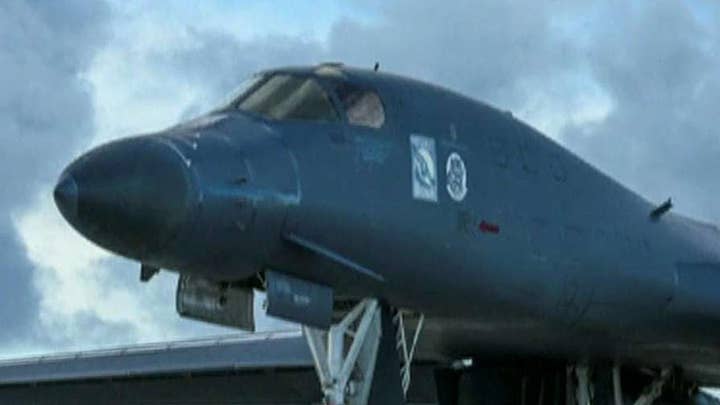
FILE: A U.S.Marine Corps F-35B joint strike fighter jet conducts aerial maneuvers during aerial refueling training over the Atlantic Ocean. (Reuters)
A 2014 test provided evidence that the U.S.’ F-35 fighter jet could prove to be a viable weapon against the threat of a North Korean-launched ballistic missile, reports said.
The high-tech F-35's sensors could help other missile-defense equipment track and destroy an intercontinental ballistic missile launched by North Korea.
John “Bama” Montgomery, a business development manager at Northrop’s targeting division, told Defense One that information gathered by the F-35s could be transmitted to a THAAD anti-ballistic missile system.
“The shooter now has information to go and put his information in the right place," Montgomery said. "Thus, the radar doesn’t have to search. It goes, ‘I know where it is; it’s right there.'”
The assessment pointed to an Inside Defense report that cited Rep. Duncan Hunter, R-Calif., who said the joint strike fighter could down an intercontinental ballistic missile (ICBM) in its boost phase.
The Defense One report said the U.S. does not have a foolproof way to down an ICBM. The report said the best chances the U.S. has in intercepting a missile is when it is on, or leaving the launch pad.
Northrop reportedly conducted a test in 2014 to determine if the F-35’s Distributed Aperture System could accurately track an ICBM. The test determined that the sensors could help missile-defense systems destroy the target.
The news was reportedly wasn't released until Tuesday because it took several years to determine. The modeling and simulation numbers are classified, but Montgomery told Defense One that, “I can tell you right now that this system, as depicted here, really does help the ballistic missile environment.”
Last week, North Korea launched a Hwasong-15 intercontinental ballistic missile that demonstrated a greater range than other missiles North Korea has tested. One expert estimated its range at more than 8,100 miles if launched on a standard trajectory, which would put Washington, D.C., within reach.
The details of the test remain unclear, with a U.S. official saying the missile did not manage to make a re-entry into Earth's atmosphere – the key problem for North Korea's nuclear program.


